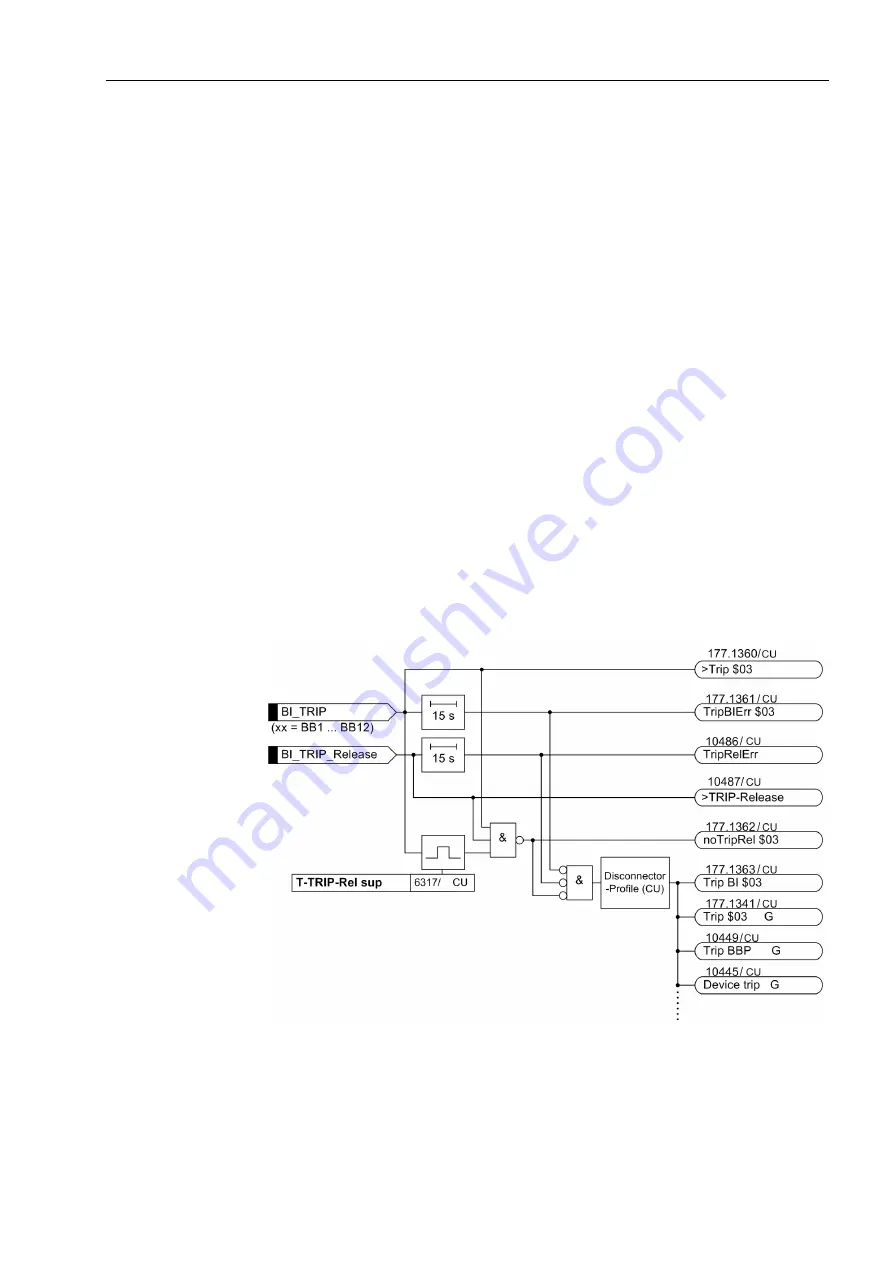
Protection General
171
7SS52 V4 Manual
C53000-G1176-C182-3
5.9.7
Busbar Tripping via an External Signal
Apart from the tripping of bus zones by the busbar protection itself, there is the option
of tripping individual bus zones via an external signal. With enclosed switchgear, for
example, the output signal of a so-called arc barrier can be coupled in the central unit
via a binary input and be used to trip the faulty zone. For safety reasons the coupling
is carried out via one binary input per bus zone with an additional common release via
another binary input.
The alarm "
>TRIP-Release
" (
FNo. 10487/CU
) is generated for the release and
"
>Trip $03
" (
FNo. 177.1360.xx/CU
) is generated for each triggering.
As confirmation message follows "
Trip Bl $03
"
(
FNo. 177.1363. xx
)
and as
group alarms "
Device Trip G
"
(
FNo. 10445)
, "
Trip BBP G
"
(
FNo. 10449
)
and
"
Trip $03 G
" (
FNo. 177.1341.xx
). "Trip
Lx CZ
" (
FNo. 10457/CU, 10458/
CU, 10459/CU
) will be issued with every tripping command.
In this, xx or $03 indi-
cates the bus zone.
The binary inputs of the active signals are monitored individually.
An alarm is generated in the event of an excess for more than 15 s.
The monitoring time between triggering and release is set with the parameter
T-TRIP-Rel sup
(
6317/CU
).
If the protection picks up, the following alarm is generated: "
TripBIErr $03
" (
FNo.
177.1361.xx/CU
), the group alarm "
TripRelErr
" (
FNo. 10486/CU
) and the fur-
ther processing of the binary input is blocked.
If there is no TRIP release, the following alarm is generated:
(
FNo. 177.1362.xx/CU
) "
noTripRel $03
".
Figure 5-39 Logic of Busbar Tripping by External Signal
www
. ElectricalPartManuals
. com








































